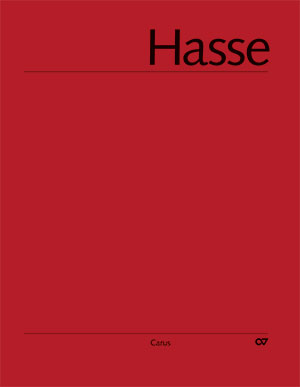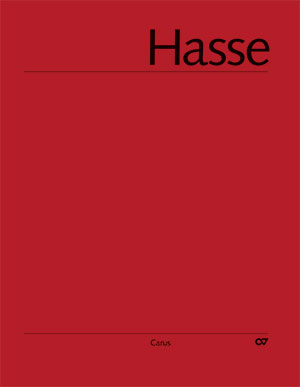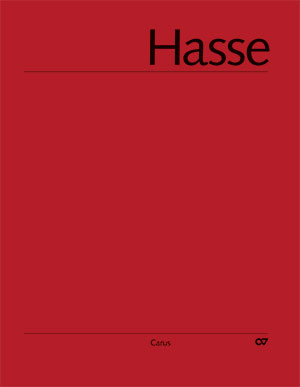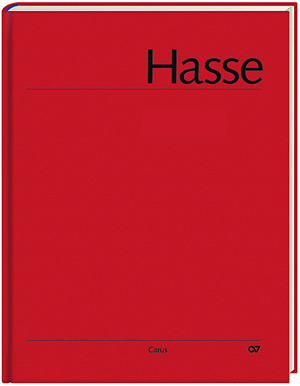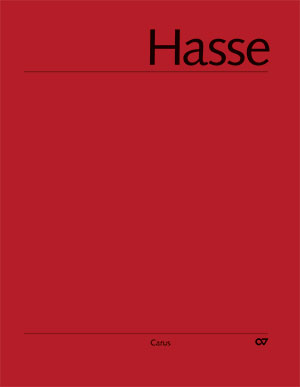
Litaneien und Tantum ergo. Hasse-Werkausgabe IV/2
Sommaire
-
Compositeur
Johann Adolf Hasse
| 1699-1783
-
Éditeur
Wolfgang Hochstein
| 1950
Critiques
Johann Adolf Hasse: Werke Abteilung IV, Kirchenmusik Bd
Johann Adolf Hasse: Werke Abteilung IV, Kirchenmusik Bd. 2. Hg. von W. Hochstein.
Hasse, der in Dresden wirkte, gehört sicher zu den zu unrecht vernachlässigten Zeitgenossen Bachs. Daher ist die Werkausgabe der Hasse-Gesellschaft, aus der nun der 2. Band mit Kirchenmusik vorliegt, sehr verdienstvoll. Enthalten sind zwei groß angelegte „Tantum ergo” und zwei Sets mit Vertonungen für Marienfeste. Die erste Gruppe besteht aus einer mehrsätzigen Vertonung der lauretanischen Litanei und dem Marienhymnus „Sub tuum praesidium” für Soli, Chor und Orchester. Die zweite Gruppe mit einer lauretanischen Litanei, „Sub tuum praesidium” und „Salve regina” ist nur für Sopran, Alt (Solo und Chor) und Orgel gesetzt. Letztere könnte auch nur mit zwei Solostimmen aufgeführt werden, da im „tutti” Soli und Chor parallel geführt sind, lediglich an einigen wenigen Schnittstellen sind minimale Änderungen erforderlich. Die Musik klingt erstaunlich modern und italienisch. Gerade die zahlreichen Sopran-Alt-Partien erinnern mit dem lichten Streichersatz an das berühmte „Stabat mater” Pergolesis. Mit diesem würden sich die Werke Hasse sicher gut im Konzert vertragen. Für den Gottesdienst sind die Stücke aufgrund veränderter Liturgie leider kaum zu gebrauchen, lediglich einige Sätze aus der zweiten Gruppe der Mariengesänge könnten z.B. in einer feierlichen Maiandacht Verwendung finden. Wer allerdings ein Konzert plant und den stolzen Preis dieser Prachtausgabe nicht scheut, findet lohnende und selten gespielte Literatur.
Axel Wilberg
Quelle: Kirchmusik 19.04.04
Hasse was a major figure of the 18th-century whose music is only gradually reaching the awareness of listeners and non-specialist scholars. This magnificent score includes two sets of the Litany of Loreto, one in F minor the other in G major. Each has a setting of Sub tuum praesidium appended, the G major setting also has a Salve Regina, and the volume also includes two further Tantum ergos. These works probably date from the 1750s and 1760s, and the F minor Litany was still in use in 1815. This is a substantial piece for SSAATTB soli, chorus, 2 oboes and strings - though the only solo movements are for soprano and tenor. Non-authoritative parts survive with only single parts, so small-scale performance is viable, though the Dresden court had available for festive occasions 16 voices, 12 or 16 violins, four violas and an ample continuo section. Both BC and I were so impressed by the piece that we fancy trying to get some people together to for a play-through some time. The scoring of the Litany in G is intriguing: SA (soli and chorus) and organ. This was not, as one might guess, written for a Venetian ospedale but in Vienna in the early 1760s for the Empress of Austria and female members of her family; the solo sections were distributed to various singers, whose names are given in one source; there were apparently two organists, Archduke (later Emperor) Joseph and Hasse himself (though there is only one organ part). Boys or girls schools might move on to this when they have exhausted Pergolesi‚s Stabat mater. This is an impressive edition of music that was well worth exhuming: I hope performance material will be made available.
Quelle: Early Music Review, 4/04, S.5
Questions fréquentes sur l'œuvre
 Il n'y a pas encore de questions et réponses concernant cette œuvre ou vous n'avez pas trouvé la réponse à votre question sur l'œuvre ? Cliquez ici et envoyez votre question spécifique à notre service clients.
Il n'y a pas encore de questions et réponses concernant cette œuvre ou vous n'avez pas trouvé la réponse à votre question sur l'œuvre ? Cliquez ici et envoyez votre question spécifique à notre service clients.



